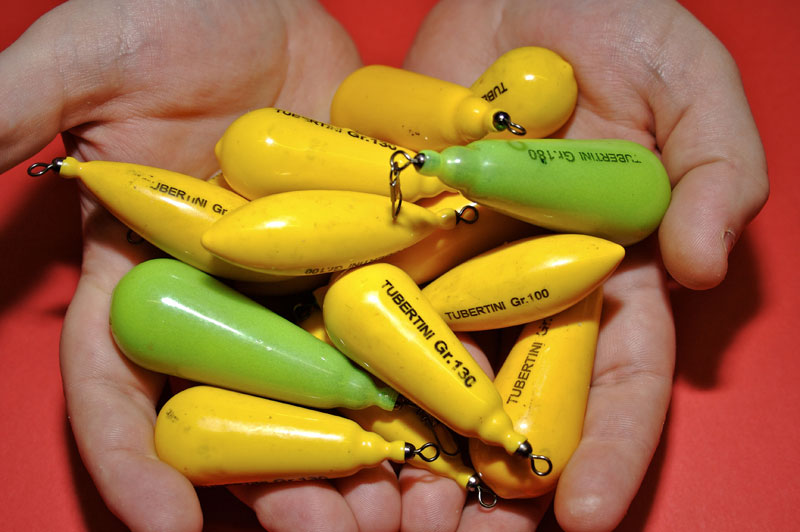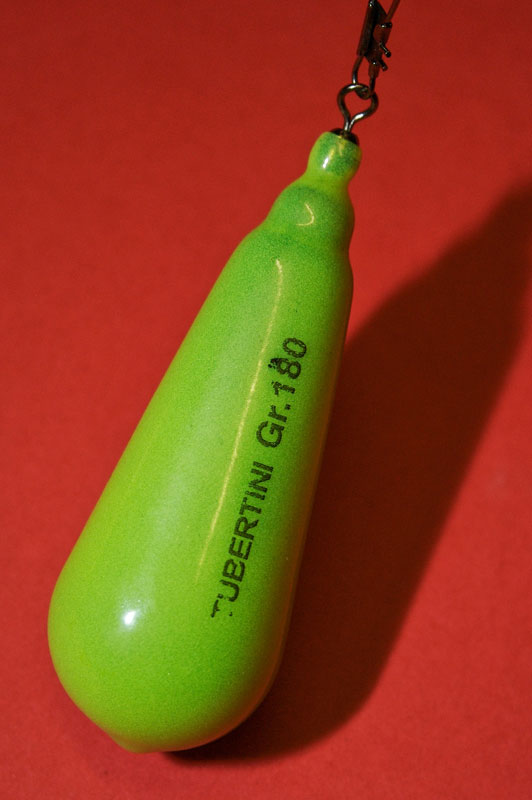Coloured lead weights are becoming increasingly popular among boat anglers in particular. Steve Souter offers reasons why a splash of lead colour might be worth considering, before looking at two coated lead products for sea anglers.
If you fish the odd boat competition you won’t have failed to notice a pronounced increase in the uptake of various coated leads. Powder coated, plastic-coated and painted leads in various shapes and colours are now available, and there is a wide range of powder colours available for those who make and coat their own leads.

So what’s it all about? Why would you want to use a coated lead when simple un-dressed leads have always served well enough? And what advantages, if any, do these garish alternatives offer anglers? The fact is there are several good reasons for using coated leads. The first is one of safety. Even in the finished form lead is toxic and residue that unavoidably transfers to the skin on contact can be harmful to varying degrees, depending on how much and how regular that contact… there’s oodles of evidence to this end all over the Internet, so I won’t prattle on about it beyond this. It makes good sense therefore to introduce a barrier between the offending material and the skin… coating effectively does this.
Attractor or detractor?
 There is much debate over the part that colour plays in drawing, or perhaps even discouraging fish. On the one hand you have those that embrace a colourful word of bright snood lines and garish attractors like beads, sequins and spoons etc. While on the other, you have those who reap the benefits of terminal tackle near invisibility, with fine fluorocarbon lines, the smallest of rig components, small hooks and refined bait presentation.
There is much debate over the part that colour plays in drawing, or perhaps even discouraging fish. On the one hand you have those that embrace a colourful word of bright snood lines and garish attractors like beads, sequins and spoons etc. While on the other, you have those who reap the benefits of terminal tackle near invisibility, with fine fluorocarbon lines, the smallest of rig components, small hooks and refined bait presentation.
Some very experienced anglers swear blind that particular colours of leads have a positive influence on catches. Some take the opinion that loud leads do not have a detrimental impact and are therefore content to use them. Then there are those who are committed to ‘natural’ presentation and rally against anything that appears out of place or unnaturally intrusive. Strong arguments can be made on both sides, but here’s an interesting quandary: There are few better exponents of fine tackle fishing than the Italians, but Italian shore and boat anglers combine fine end-tackle with coloured leads to great effect.
My personal experience is mixed. From a competition perspective I have found that a rolling luminous lead seems to work well for dogfish, which might in fact be a good reason for pleasure anglers to avoid them! I like small orange or red ball leads for wrasse fishing, while I also lean towards white leads for long trace work for pollack. I can’t provide any scientific arguments for these preferences; my reasons are simply rooted in my results. Having said this, I use many more un-decorated leads than I do the other.
Coats of many colours
 If the previous colour argument doesn’t sway you then perhaps there is another simpler, more practical reason for packing a bit of colour.
If the previous colour argument doesn’t sway you then perhaps there is another simpler, more practical reason for packing a bit of colour.
I make most of my own leads and powder-coat some of them. The reason has only so much to do with any belief that fish are magically drawn to particular colours, and everything to do with instant identification of specific weights. Boat anglers, particularly those who fish rough ground, carry an unhealthy number of different sized leads; usually in a disordered bucket which promises to dislocate your shoulder as soon as you attempt lift it! There is nothing worse than burst fingernails as a result of raking through the upended debris, hunting a certain weight that wasn’t obvious amongst the heap of greyness.
To make life simpler I tend to powder-coat my 10oz leads yellow, and my 6oz ones white, for example. This way, seeing and grabbing what you want is quick and easy. All goes to cock of course when I next get round to coating some leads, forgetting to engage my brain and do the 6oz in black and the 10oz red! You can of course take things further and experiment with making multi-coloured leads etc just for the hell of it, but that might just suggest that you really need to get out more.
Tested: Tubertini leads
Supplied in either a rubberised yellow or luminous green finish these elongated pear-shaped bombs come fitted with quality rolling snap swivels. I had some 30 leads to mess about with and all swivels were found to turn freely, unlike many other commercially available swivel bomb-type leads.
Some may worry over the integrity of the snap components for casting, but these proved stronger than they appear. Continual casting failed to spring a single clip. Personally, I hate these sorts of clips even if they are strong. I find them fiddly at the best of times, and painful to work with when hands are wet and cold. I use lead clips in my rigs as a matter of course and running booms are also armed with such. I therefore opt to remove the clips and attach via the swivel only.


The coating/covering is hardwearing and will score rather than chip and fall off as commonly happens with painted leads over rougher ground. The yellow finished leads have no luminous properties, while the green version is highly luminous and very popular among Irish competition anglers. Although ambient light will provide the green leads with some luminosity, charging with a headlamp, torch, a camera flashgun or best of all, a UV torch, really bring these to life.


Tubertini coated leads are available in 100, 130, 150 and 180g sizes, prices from Dan Lynch
Tested: Ultramarine leads
Cast in the classic DCA Beach Bomb shape, these leads from Italian company Ultramarine are looped rather than swivelled. Properly charged with a light source, these ‘apple core’ coloured leads are without question the most luminous I have used on to date… I’d go so far as to suggest you could just about read a book in a dark room with them! There is however a trade off for this super-luminescence, which is that the coating isn’t the most robust.

Ultramarine luminous leads are painted and lacquered rather than a finished in a plastic effect. The coating shell is easily fractured and inclined to break off in lumps. Care should there be taken to transport the leads so that they do not knock together, and it would also be good policy to reserve them for clean ground fishing. I can live with them suffering a few chips however, and would give them a worthy 9-out-of-10 for their ability to absorb, hold and output considerable light.
Available in 1, 2, 3, 4, 5 and 6oz sizes or 30 – 160g, prices vary from £0.99 each for the smallest, to £1.40 for the 6oz. Contact Ultramarine at Ultramarine











